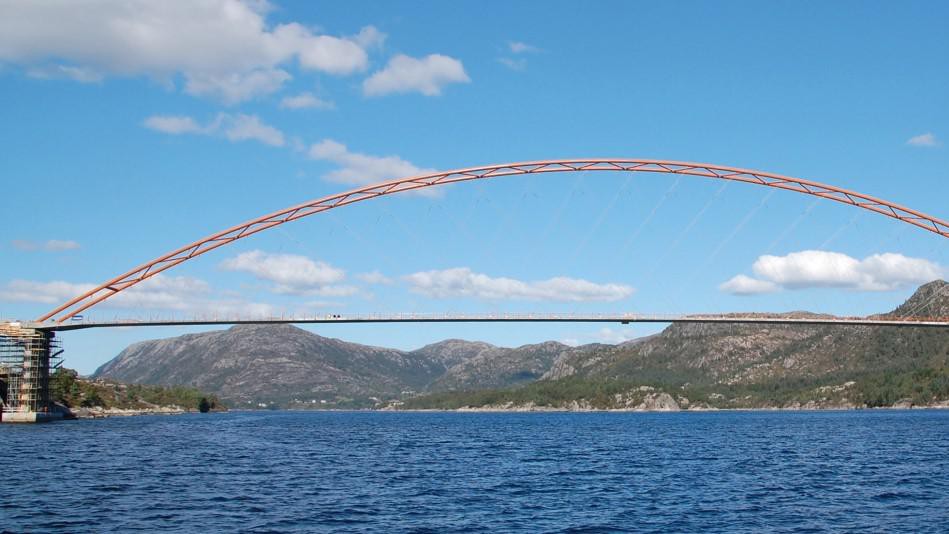Dr. Pier Tveit - IMPROVED NETWORK ARCHES

© 2017 EPFL
IMPROVED NETWORK ARCHES - RESULTS OF OVER 60 YEARS OF RESEARCH
Friday 26.05.2017 - 15h00 - GC B3 30
Summary
Working on his master’s thesis in 1955, the author got to know the work of O. F. Nielsen. Around 60 of his bridges were built in Sweden between the two World Wars. Sloping hangers reduced the bending moments in arch and tie.
Today we have bigger live loads and stronger materials. Thus it is often advantageous to use arches where hangers cross each other at least twice like in the network arch.
The network arch is very competitive with a steel arch and a concrete tie with prestressing cables taking the longitudinal force in the tie.
Compared to usual tied arch steel bridges with vertical hangers, the bending moments in the chords are reduced by 80 % to 90 %. Savings in structural steel can be more than 75 % without substantial increase in the amount of reinforcement in the concrete tie.
Efficient methods of erection are available. The most straightforward is to cast the concrete tie on a scaffold. The tie makes a good platform for erecting the arch and hangers. Then the hangers can be tightened till they carry the tie.
Other methods of erection utilise the fact that the arch and hangers of a network arch supplemented by a temporary tie can carry the casting of the concrete tie.
At the end of the lecture I will tell something new. It will be how to design the world’s longest and most slender network arch. Span 400m. A light steel skeleton can be moved to the bridge site by pontoons or big floating cranes. Then the steel tubes can be filled with very strong concrete. The form for the casting of the lower chord can be used for spans of different widths and length.
Biography
Per Tveit is Docent Emeritus at Agder University, Grimstad, Norway. He graduated from The Technical University of Norway in Trondheim in 1955. He was awarded his dr. ing. from the same institution in 1964.
He has worked in private firms for 5 years. The rest of his professional life he has been in institutions of higher learning in Norway, Denmark and the USA. This gave more time for research.
When working on his master’s thesis he came up with the idea of the network arch. By the author’s definition it is an arch bridge where some hangers cross each other at least twice. It has been the main theme of his research ever since.
In the early sixties he was allowed to build network arches in Steinkjer and Bolstadstraumen in Norway. They have lived up to his predictions and expectations. http://home.uia.no/pert/
The idea has spread. Recently network arches have been built in about 27 countries. Some of the places that network arches have been built can be found on this map that the author is still working on: www.tinyurl.com/nettverkbogekart
Per Tveit has travelled around the globe 4 times and has given lectures on network arches in 50 countries.